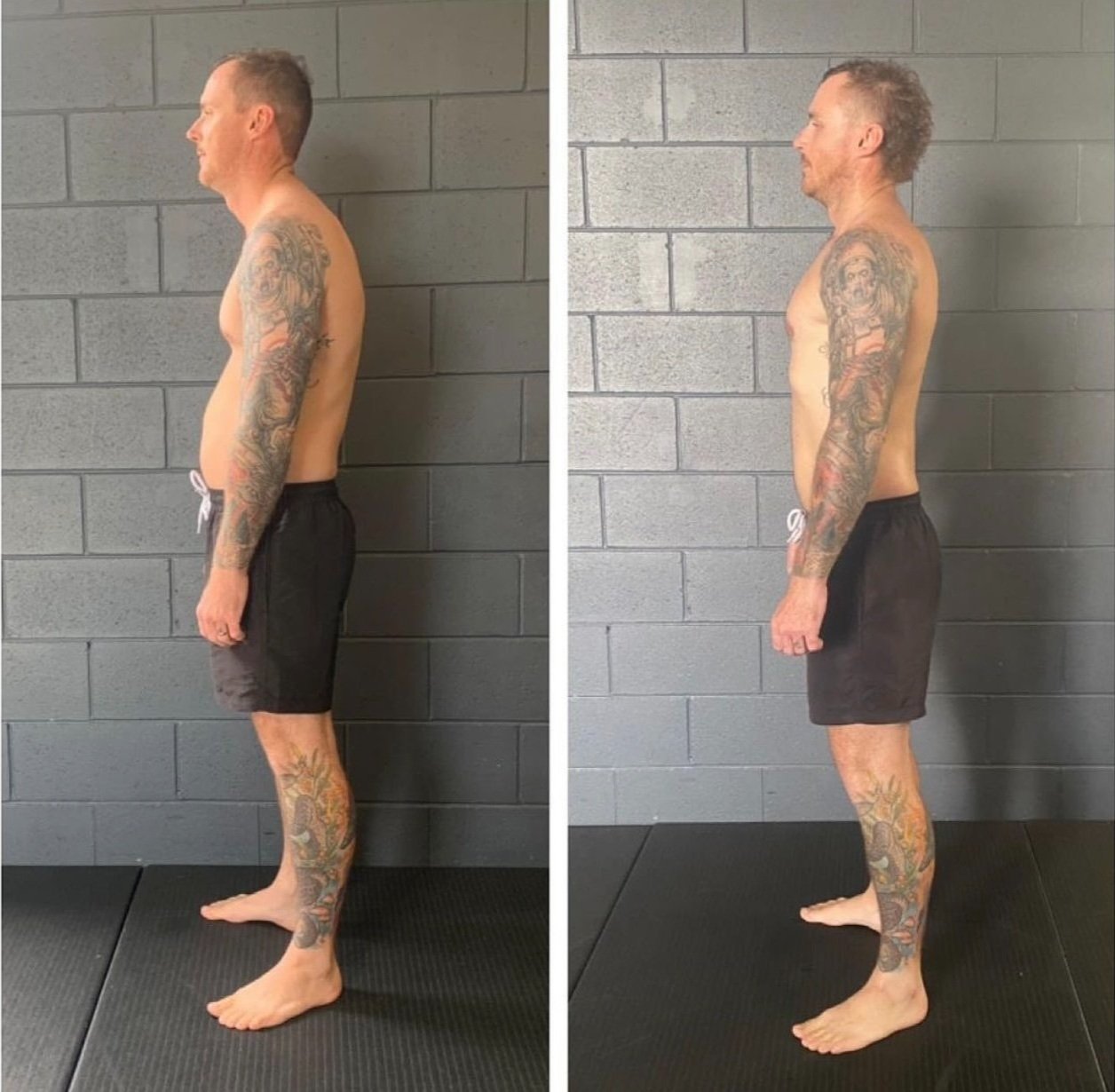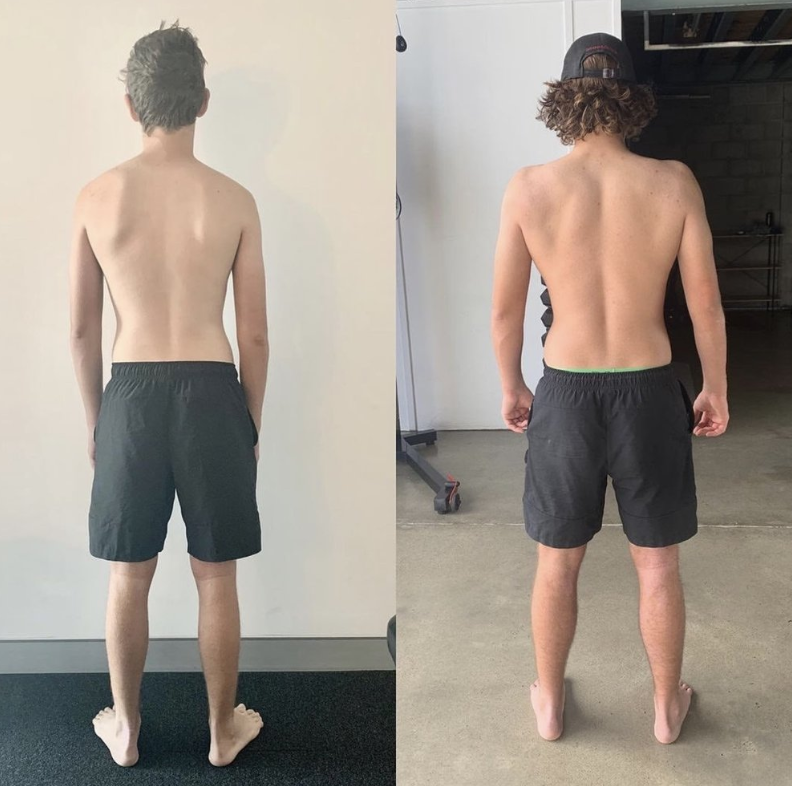How Posture Contributes to Headaches & How to Fix It
Headaches and posture are more connected than you might think. Many people blame tension or stress for their headaches, but bad posture and headaches often go hand in hand. Whether you're dealing with throbbing pain at the base of the skull or tightness spreading across your head and neck, your posture might be the root cause.
In this blog, we’ll explore five solid ways poor posture can lead to headaches and explain how the Functional Patterns Method offers a permanent solution to both headaches and posture problems.
1. Poor Head Posture Overloads the Cervical Vertebrae
When you spend a lot of time looking down at a screen, your head shifts forward. This “forward head posture” puts excessive strain on your cervical vertebrae, which are designed to support the weight of your head when it’s aligned over your spine.
Every inch your head moves forward increases the load on your neck, leading to neck pain, muscle tension, and tension type headaches. Functional Patterns addresses this by aligning your head and neck through good posture practices that reduce stress on the cervical spine, allowing your body to move freely without compressive forces causing pain.
Functional Patterns Before & After
2. Joint Stacking Reduces Tension
Your body functions best when your joints are "stacked" in alignment—hips over knees, knees over ankles, and your head over your shoulders. When this alignment is off, your neck muscles have to compensate, causing them to contract excessively.
This compensation not only leads to pain and headaches, but it also creates imbalances that affect how your entire body moves. Functional Patterns training helps restore natural joint stacking, so your body operates efficiently, eliminating the tension that often triggers headaches and posture-related discomfort.
Functional Patterns Before & After
3. Tensegrity Supports the Head and Neck
The concept of tensegrity—a balance between tension and compression in your body—explains why poor posture can lead to headaches. When tensegrity is compromised, one area of your body (like your shoulders or shoulder blade) overcompensates for weak or misaligned structures.
This imbalance can create myofascial trigger points, which are knots in the fascia that often refer pain to other areas, including the head. Functional Patterns restores tensegrity by training your body as an integrated system, so every structure supports the others, reducing the risk of tension-related headaches.
4. Flaccid Neck Muscles Masking as Tightness
Do your neck muscles feel tight? You might be surprised to learn that they could actually be weak. Bad posture often leads to muscles that are too weak to hold your head in the right position, forcing other muscles to take over and work harder.
This muscle imbalance creates a domino effect, leading to strain and tension type headaches. Functional Patterns targets the root cause by addressing flaccid muscles, retraining them to support the head and neck correctly. This removes the burden from overworked muscles, breaking the cycle of tension and pain.
Functional Patterns Before & After
5. Poor Posture Impacts Blood Flow and Nerve Function
Slouching and misalignment can compress blood vessels and nerves at the base of the skull, reducing oxygen and nutrient flow to your brain. This compression can trigger poor posture headache symptoms like throbbing pain and even dizziness.
Functional Patterns improves circulation by teaching you to sit up straight and move with proper alignment, ensuring optimal blood flow and nerve function. This approach not only helps relieve existing headaches but also prevents them from returning.
Why Functional Patterns Is the Solution
Functional Patterns doesn’t just focus on "quick fixes" like physical therapy exercises or stretches. It uses biomechanical principles to address the root causes of bad posture and its effects. Here’s how:
Joint Alignment: Functional Patterns training emphasizes proper joint stacking to reduce strain on your spine and neck.
Movement Efficiency: By restoring tensegrity, the method retrains your body to move as an integrated system, eliminating the imbalances that lead to headaches and posture issues.
Targeted Strengthening: Weak, flaccid muscles are activated and strengthened to hold your body in alignment, relieving tension at the base of the skull.
Long-Term Results: Unlike temporary solutions, Functional Patterns provides a sustainable approach to improve posture and prevent pain and headaches from recurring.
Functional Patterns Training at Burleigh Biomechanics
Practical Steps to Get Started
If you're struggling with bad posture and headaches, here’s how you can take action today:
Be Mindful of Your Posture: Check in with your body throughout the day. Is your head stacked over your shoulders? Are you slouching? Adjust as needed.
Incorporate Movement: Don’t just sit up straight—move! Your body is designed for dynamic movement, not static positions. The complicated thing is, most movements we used these days are terrible for posture. Invest in Functional Patterns training to find out what movements will actually help your posture.
Seek Professional Help: Functional Patterns practitioners specialise in assessing your body’s unique imbalances and creating a personalised plan to fix them.
To Wrap Things Up
The link between headaches and posture is clear, but the solution doesn’t have to be complicated. While common advice like stretching or using physical therapy might provide temporary relief, Functional Patterns offers a permanent, biomechanical approach that transforms your posture—and your life.
By focusing on good posture, proper alignment, and dynamic movement, you can finally free yourself from the cycle of pain and headaches. Whether you’ve been battling tension type headaches or struggling with neck pain, the Functional Patterns Method can help you address the root cause and build a body that supports itself naturally.




